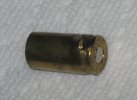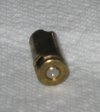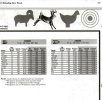I don't fret over OAL. I currently have, five pistols and a carbine, chambered in 9mm. Do the plunk tests for whatever pistol/pistols you have, with the bullets you intend to use. If it passes the plunk test, you should be fine with cast, since cast bullets develop less pressure than jacketed. Just adhere to the published data. Most data gives COAL. However, that's just a starting point.
Personally, I don't like COAL/OAL. I use ogive length..............which is significantly shorter than published COAL/OAL. Record the shortest ogive length that passes the plunk test, in whatever firearm/firearms you own. The 9mm headspaces on the mouth of the case. With a half dozen 9's, I'm not about to keep separate ammunition for certain firearms. I use an ogive length that passes the plunk test in the shortest throat that I own. Factory ammunition, works in all 9mms.

Gather a bunch of different factory ammunition and record ogive lengths. That should also give you a good idea where your length should fall.
That being said, I only load cast bullets that were designed for 9mm. I don't/won't consider loading 38/357 SWC's. I also don't care for heavy for caliber 9mm bullets, anyways. I stay with 115-138 grain cast bullets. I do have an Accurate 147 TC that doesn't give me the accuracy, I expected, from the CZ Scorpion carbine.
Been loading 9mm for near on fifty years. Was the second caliber, I began casting for. Never any issues, never blew up a gun. I used the RCBS 9mm-124-RN GC, exclusively in my 70's issue Browning HP. The other bullets was the Lyman 356402 TC..............which is on your list. Both were over 5.0 grains of Unique. Data out of RCBS Cast Bullet Manual for their 125 RN. Since the charge was safe for the heavier 125, I considered it safe for the lighter 120 Lyman.
You must also understand that American data is pretty anemic for 9mm. The European 9mm ammunition would be considered +P if not +P+ loadings.
That being said, you can't get stupid and load too short or not have enough
taper crimp, to have the bullet set back in the case, upon cycling/feeding or recoil. Press a measured loaded round on the edge of you bench, check to see if length changed. If not, you should be good to go.
Hope this helps.





